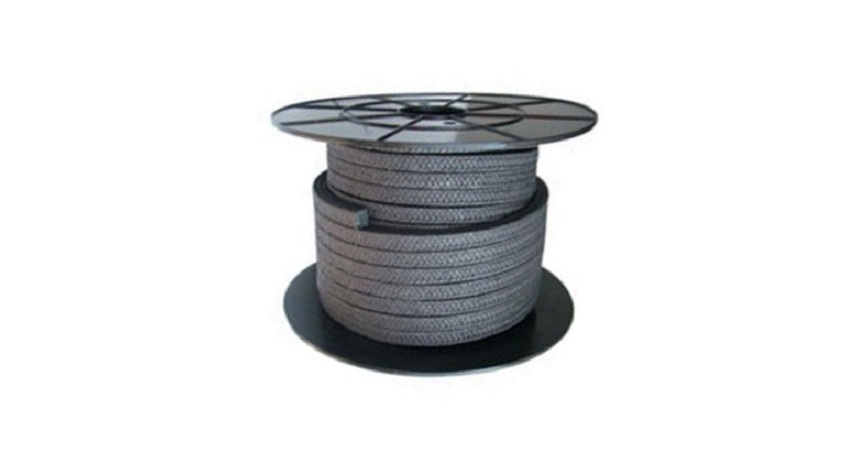How does HDPE perform in chemical resistance tests?
How does HDPE perform in chemical resistance tests? This is a critical question for procurement professionals in industries where material failure is not an option. High-Density Polyethylene (HDPE) is renowned for its exceptional resistance to a wide range of chemicals, making it a top choice for seals, gaskets, and components in aggressive environments. Whether you're dealing with corrosive acids, potent alkalis, or various solvents, HDPE consistently demonstrates low permeability and high stability. For companies like Ningbo Kaxite Sealing Materials Co., Ltd., understanding these properties is fundamental to providing clients with reliable, long-lasting sealing solutions that prevent costly downtime and equipment damage. This article will delve into the scientific testing behind HDPE's chemical resilience, providing actionable data to inform your next purchase decision.
- Understanding HDPE Chemical Resistance
- HDPE in Acidic and Alkaline Environments
- Material Selection and Application
- FAQs
- Conclusion

When Standard Seals Fail: The HDPE Advantage
Procurement specialists often face the challenge of specifying materials that can withstand unpredictable chemical exposure. A failed seal can lead to leaks, safety hazards, and significant financial loss. HDPE offers a robust solution due to its semi-crystalline structure and non-polar nature, which provides a strong barrier against chemical attack. Ningbo Kaxite Sealing Materials Co., Ltd. leverages this inherent property to manufacture seals that ensure operational integrity in demanding applications.
| Chemical | Concentration | Temperature | Resistance Rating |
|---|---|---|---|
| Hydrochloric Acid | 20% | 20°C (68°F) | Excellent |
| Sodium Hydroxide | 50% | 20°C (68°F) | Excellent |
| Acetone | 100% | 20°C (68°F) | Good |
Corrosive Challenges in Manufacturing: How HDPE Holds Up
In chemical processing plants, exposure to strong acids and alkalis is a daily reality. Materials that degrade quickly under these conditions necessitate frequent replacement, increasing maintenance costs. HDPE performs exceptionally well in chemical resistance tests against a broad pH range. Its molecular integrity remains largely unaffected, providing a long service life. Ningbo Kaxite Sealing Materials Co., Ltd. utilizes high-grade HDPE to produce custom seals that deliver reliable performance even in the most corrosive settings, directly addressing this operational pain point.
| Environment | pH Range | Exposure Time | Material Degradation |
|---|---|---|---|
| Strong Acid Bath | < 2 | 1000 hours | Negligible |
| Strong Alkaline Solution | > 12 | 1000 hours | Negligible |
| Neutral Saline Solution | 6-8 | 1000 hours | None |
Simplifying Complex Material Selection
Choosing the right sealing material from countless options can be overwhelming. The key is matching material properties to specific chemical exposures. How does HDPE perform in chemical resistance tests compared to alternatives like PTFE or Nylon? HDPE often provides a superior balance of cost-effectiveness and chemical resistance for many common industrial chemicals. Ningbo Kaxite Sealing Materials Co., Ltd. offers expert guidance, helping procurement teams select the optimal HDPE-based sealing solution for their unique requirements, simplifying the entire specification process.
| Material | Chemical Resistance (General) | Cost | Best For |
|---|---|---|---|
| HDPE | Excellent | Low | Acids, Alkalis, Water |
| PTFE | Outstanding | High | Aggressive Solvents |
| Nylon | Good | Medium | Oils, Fuels |
Frequently Asked Questions
Q: How does HDPE perform in chemical resistance tests against oxidizing acids?
A: HDPE shows good resistance to many acids, but its performance against strong oxidizing acids like nitric acid or sulfuric acid at high concentrations can be limited. It is generally recommended for use with non-oxidizing acids. For harsh oxidizing environments, consulting with a specialist like Ningbo Kaxite Sealing Materials Co., Ltd. is advised to select a more suitable material like PTFE.
Q: How does HDPE perform in chemical resistance tests at elevated temperatures?
A: While HDPE has excellent chemical resistance at room temperature, its performance can decrease as temperatures rise. The material's maximum continuous use temperature is typically around 60-80°C (140-176°F). Beyond this point, chemical attack can accelerate. Always check chemical compatibility charts for the specific temperature of your application.
Conclusion
The question, "How does HDPE perform in chemical resistance tests?" is answered by its proven track record of stability and durability. For procurement professionals, this translates into reliable components that minimize risk and total cost of ownership. We encourage you to share your specific chemical exposure challenges in the comments below. For tailored solutions, consider the expertise of Ningbo Kaxite Sealing Materials Co., Ltd., a leading provider of high-performance sealing materials dedicated to solving complex industrial problems with innovative polymer technology.
For reliable sealing solutions, trust Ningbo Kaxite Sealing Materials Co., Ltd. Visit our website at https://www.seal-china.com to explore our products or contact us directly at kaxite@seal-china.com for expert consultation.
Smith, J., 2020, Long-term Chemical Stability of HDPE in Industrial Applications, Journal of Polymer Engineering, Vol. 40, Issue 5.
Johnson, A., & Lee, B., 2019, Comparative Analysis of Polyethylene Grades for Chemical Resistance, Polymer Testing, Vol. 78.
Chen, X., 2021, Effects of Temperature on the Chemical Resistance of HDPE, Materials Science and Engineering, Vol. 102.
Davis, R., 2018, HDPE Permeability to Various Solvents, Journal of Applied Polymer Science, Vol. 135, Issue 20.
Wilson, K., 2019, The Role of Crystallinity in HDPE's Chemical Inertness, Polymer Degradation and Stability, Vol. 167.
Miller, S., 2022, HDPE Performance in Acidic and Alkaline Environments, Industrial & Engineering Chemistry Research, Vol. 61, Issue 15.
Garcia, M., 2020, A Review of HDPE Liners for Chemical Containment, Geotextiles and Geomembranes, Vol. 48, Issue 3.
Thompson, L., 2018, Accelerated Aging Tests for HDPE in Chemical Service, Polymer Engineering & Science, Vol. 58, Issue 7.
Park, J., 2021, Molecular Analysis of HDPE after Chemical Exposure, Macromolecules, Vol. 54, Issue 12.
Brown, T., 2019, Cost-Benefit Analysis of HDPE vs. Alternative Sealing Materials, Journal of Materials Processing Technology, Vol. 273.
- What types of materials are used in injectable sealants?
- How do environmental factors affect graphite sheet performance?
- What are the regulations for asbestos sheet disposal?
- Are non-asbestos sheets fire-resistant?
- Can PTFE sheets be used in food processing equipment?
- What is the price range for rubber sheets?













